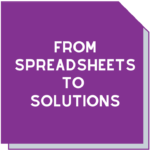Is your NATA accreditation in danger?
 We’ve written previously about your quality system.
We’ve written previously about your quality system.
We’ve addressed training and internal auditing and how to be sure your QMS is up to scratch.
But we also know that sometimes things can start to go wrong in a lab. And these are things that could lead to a lot of issues in your next assessment or even worse, lead to suspension of your accreditation.
The warning signs
These could be small things that happen in your lab over a year or two. Or larger things that you put on the backburner and didn’t get to yet. Some of these issues could be:
Business growth – your business has grown (which is great) but your staff training and resources haven’t kept up with this expansion.
Staff losses – technical staff in key roles may have left and rather than replacing them, other staff are now in those roles. This has left the lab short staffed and without adequate senior technical staff supervision with the relevant skill set to supervise less experienced staff.
Technical issues – these could be chronic problems in the lab but nobody has addressed them. Instead, they’re just brushed off as ‘that’s just how it is right now’. And nobody outside the lab knows about them.
Lack of back up – labs are usually pretty tight ships. But this means that if someone is on leave or unwell for a period of time, things can slip. Internal audits don’t happen because staff are too busy. Corrective action investigations and implementation don’t progress. Quality practices may be allowed to slide ‘just a little’ because of time constraints.
NATA’s requirements – these may have changed since your last assessment. Perhaps the changes seemed subtle but if there isn’t anyone to check this, you may be unaware of the impact on your business.
An accreditation visit is due – although this is a requirement of holding and maintaining accreditation, some labs are caught by surprise when they receive the notification. More concerning would be finding the last assessment or surveillance report and discovering there are items that need action. Or not being able to find the report at all.
None of these things individually add up to disaster. But if you’ve nodded your head at a couple of them, it’s time to take action.
The NATA Rules talk about suspension of accreditation particularly in Rules 40 and 41. But let’s be clear about this. NATA doesn’t WANT to suspend your lab! This isn’t because there’s a pile of paperwork to wade through to make this happen (although there is…). It’s because they acknowledge the amount of time, money and energy that went into achieving accreditation in the first place.
How can accreditation suspension happen?
There are three ways that your lab could have its accreditation suspended – failing an assessment, NATA receiving advice from another agency, or voluntary suspension.
Failing an assessment
According to the NATA Rules and the procedures for accreditation, NATA can suspend or cancel accreditation for non-compliance with the accreditation criteria.
Keep in mind that the nonconformances would need to be serious and systemic before NATA goes down this path.
You should be able to gauge during the assessment that things aren’t going well. It’s too late at this point to try and fix those issues that we identified at the start of this article. But prepare yourself to receive a long assessment report…and possibly a warning from the NATA Accreditation Specialist of a possible suspension.
Advice from an external body
NATA receives information from external bodies such as the RANZCR, the RCPA, State and Territory Health Departments and Roads authorities. If NATA deems this information relevant, it can lead to an investigation and possible suspension of your laboratory accreditation.
Voluntary suspension
Let’s say you found yourself reading the information at the beginning of this article and realised that many of them applied to your lab. And let’s assume that you have an accreditation visit coming up.
If you know your lab won’t be able to meet the accreditation criteria in a substantial way, you can choose to have your accreditation suspended. While this is a risk to your business, consider if you can do without the accreditation for a little while. If so, this will give you time to get your system sorted and could be a better option. But it may mean the road back to a fully operational accreditation status is not as easy as if things were in good shape before the assessment.
Remember to get written information from NATA prior to the suspension so you’re clear on what steps are required to regain accreditation.
Now, let’s drill down into what you can do to safeguard your NATA accreditation status.
Protecting your NATA accreditation
You may have an idea that things in the lab aren’t running as smoothly as they should be. Unfortunately crossing your fingers and hoping for the best is not the way to go.
Don’t rely on good will. Even if you’ve had the same NATA Accreditation Specialist for previous visits, there’s no guarantee the same person will be there every time. Always assume the person coming to carry out your assessment knows nothing about your processes or your history.
The first step is to examine your quality system in line with the ISO standard (E.G. ISO 17025) you hold accreditation for. The Management Review clause in that standard is a good place to begin since it covers the key aspects of a lab quality system.
Include all the information you can think of and be sure to include what’s going well in the lab.
Now you have this information, you can step back and look at what needs fixing. Begin with the technical problems that may be affecting the validity of your test results. Determine which items you need to action and develop plans for each of these. If you have a risk management system in place, now would be the time to dust it off and run those problems through it to help record this analysis and plans.
This isn’t time to worry about being perfect. At this stage, ‘good enough’ will do!
For more specific guidance, consider consulting with experts who specialize in ISO/IEC 17025 consulting and accreditation, ISO 15189 accreditation, and ISO/IEC 17020 accreditation. MAS Management Systems can provide tailored advice to ensure your lab maintains its accreditation standards effectively.
Changes
Once you know what changes need to be made, begin to implement these one at a time. Involve all relevant stakeholders in the implementation process. In this instance, your corrective action action system is your friend.
Keep records of the changes you’ve made and measure the improvements. Have data from the process before and after the improvements are made. This will help all stakeholders to see the benefits including staff, management, and NATA.
If the results are positive and management approves, the lab can adopt the changes. Update your procedures and train staff in the new procedures. Be sure to include the training details in your staff records.
Use your internal audits to ensure the improvements are implemented.
The final word
Although it is possible to find your way back from a suspension, it’s obviously much better to avoid getting into this situation. And we know from experience, it can also be a difficult road back to accreditation.
As well as running training courses to support your lab to work better and smarter, MAS offer advice and tailored solutions to ensure your lab is the best it can be.
Don’t wait until your lab is on a slippery slope! Call Maree on 0411 540 709 or email info@masmanagementsystems.com.au and discover what we can do for your lab.
Remember, you don’t have to do this alone!
Download the article Is your NATA accreditation in danger?





